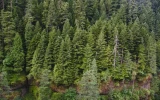How Much Do Logging Companies Pay for Trees? (2023 Prices)
The price of timber depends on several factors, including the species of trees you have, their size and quality, and the market demand for the type of wood. If there is a high demand for timber in your area, you may be able to sell your trees for a higher price. In this article, we'll discuss the approximate value of the trees on your property and how much logging companies should actually pay for them.
Black walnuts are worth between $3 and $8 per board foot, while white oaks have a value between $2 and $5. Meanwhile, black cherry trees are priced between $2 and $6 per board foot. Ash, yellow poplar, and red oak trees fetch prices between $1 and $3 per board foot.
Surprisingly, you can negotiate a higher price from logging companies if your timberland is located close to a mill. This is because they can save on the supposed transportation costs. Let's see some other main factors that can impact timber prices.
Summary
- Logging companies can expect to pay between $1 and $8 per board foot for some of the most common hardwood species of trees, such as black walnut, red and white oak, ash trees, yellow poplar trees, and black cherry.
- Douglas fir trees in the Pacific Northwest tend to be more valuable (around $600–$800 per thousand board feet) than pine trees in the Southeast (only around $250–$400 per thousand board feet) due to the abundance of high-quality timber in the region.
- For sawtimber, which is the highest-value timber product used for construction, logging companies may pay anywhere from $500 to $5,000 per acre.
- If you're selling your trees for veneer logs, you can price them anywhere from $500 to $5,000 per thousand board feet.
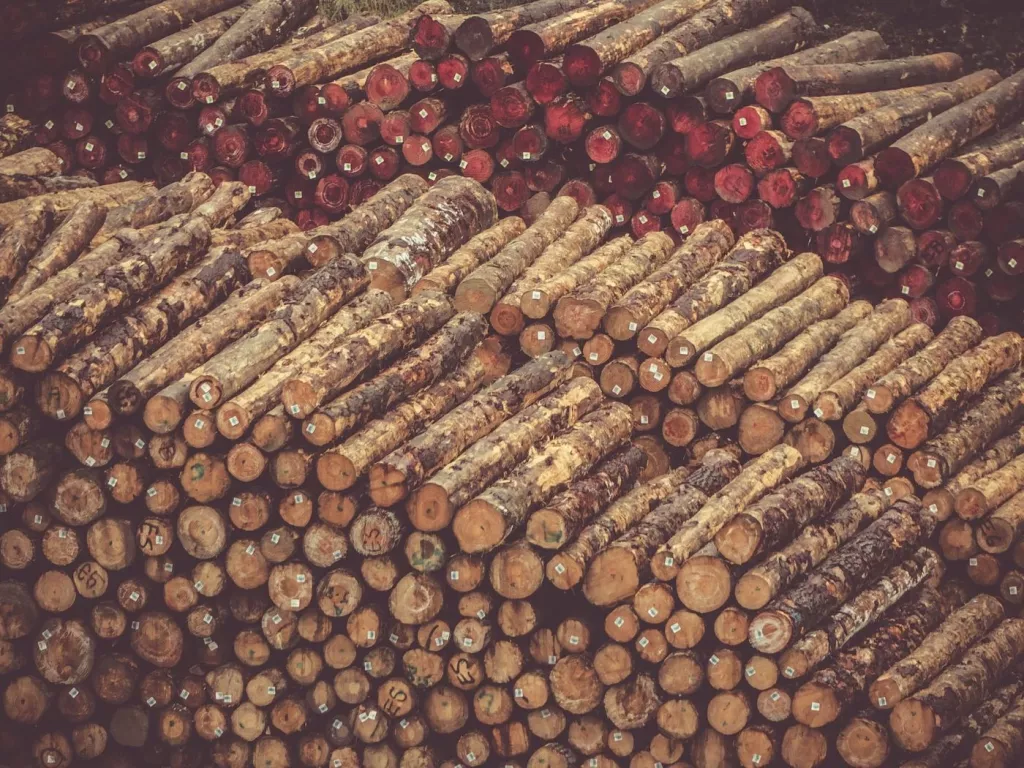
On this page:
Tree Species And Their Prices
Below are some of the most common hardwood tree species and their current prices (as of 2023):
| Hardwood Species | Common Uses | Value per Board Foot |
|---|---|---|
| Black Walnut | Furniture, Cabinetry, Flooring | $3-$8 |
| Red Oak | Furniture, Flooring, Cabinetry | $1-$3 |
| White Oak | Furniture, Flooring, Barrels | $2-$5 |
| Black Cherry | Furniture, Cabinetry, Musical Instruments | $2-$6 |
| Ash | Furniture, Flooring, Sports Equipment | $1-$3 |
| Yellow Poplar | Furniture, Cabinetry, Musical Instruments | $1-$3 |
Black walnut trees cost around $3 to $8 per board foot
Black walnut is a highly prized hardwood species that is known for its beautiful, dark wood and its durability. It is commonly used for furniture, cabinetry, and flooring. You can see more of its characteristics that make it suitable for lumber production in this article.
Black walnut trees can be worth between $3 and $8 per board foot, depending on their quality and size. In some areas, black walnut may be in high demand and therefore fetch a higher price, while in other areas, it may not be as sought after.
Red oak is priced between $1 and $3 per board foot
Red oak is a popular hardwood species that is used for a variety of applications, including furniture, flooring, and cabinetry. It is known for its attractive grain pattern and its durability.
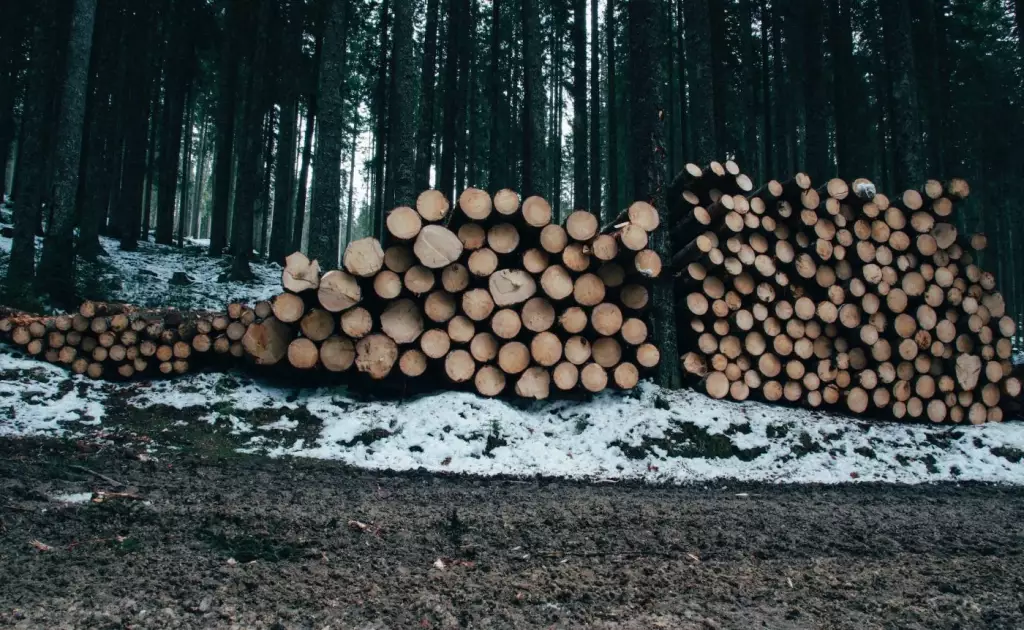
These trees can be worth between $1 and $3 per board foot. Higher quality red oak can command a higher price per board foot.
Since red oak is a relatively abundant hardwood species, it helps to keep its price relatively affordable compared to some of the more exotic hardwoods.
It is also one of the fastest-growing timber species, growing almost 3-4 feet each year and earning $1,500 - $3,000 per acre annually.
White oak is valued between $2 and $5 per board foot
White oak is another popular hardwood species that is known for its strength and durability. It is commonly used for furniture, flooring, and barrels.
The current market value for white oak ranges from $2 to $5 per board foot, although prices can fluctuate depending on supply and demand. In general, larger and higher-quality white oak trees will command a higher price per board foot.
Black cherry is worth anywhere between $2 and $6 per board foot
Black cherry is a valuable hardwood species that is known for its beautiful reddish-brown wood and its resistance to decay. It is commonly used for furniture, cabinetry, and musical instruments.
These trees can be worth between $2 and $6 per board foot, depending on their quality and size. Generally speaking, black cherry trees that are larger and have fewer defects will command a higher price per board foot.
In the United States, black cherry is primarily found in the eastern part of the country, particularly in the Appalachian region. The wood is harvested by professional loggers and sawyers, who carefully select and cut the trees to maximize their value.
Once the wood is processed into lumber, it is typically sold to manufacturers and craftsmen who use it to create high-quality products.
Ash trees are worth between $1 and $3 per board foot
Ash is a popular hardwood species that is known for its strength, flexibility, and shock resistance. It is commonly used for furniture, flooring, and sports equipment.
Ash trees can be worth between $1 and $3 per board foot. Generally, larger and higher quality trees that are easier to access will have a higher value.
The value of ash trees has been affected by the emerald ash borer, an invasive species that has killed millions of ash trees in North America. As a result, the demand for ash wood has increased, leading to higher prices. However, it remained one of the most profitable hardwood trees that you can grow by yourself.
Yellow poplar trees are priced between $1 and $3 per board foot
Yellow poplar, also known as tulip poplar, is a fast-growing hardwood species that is known for its lightweight and straight grain. It is commonly used for furniture, cabinetry, and musical instruments.
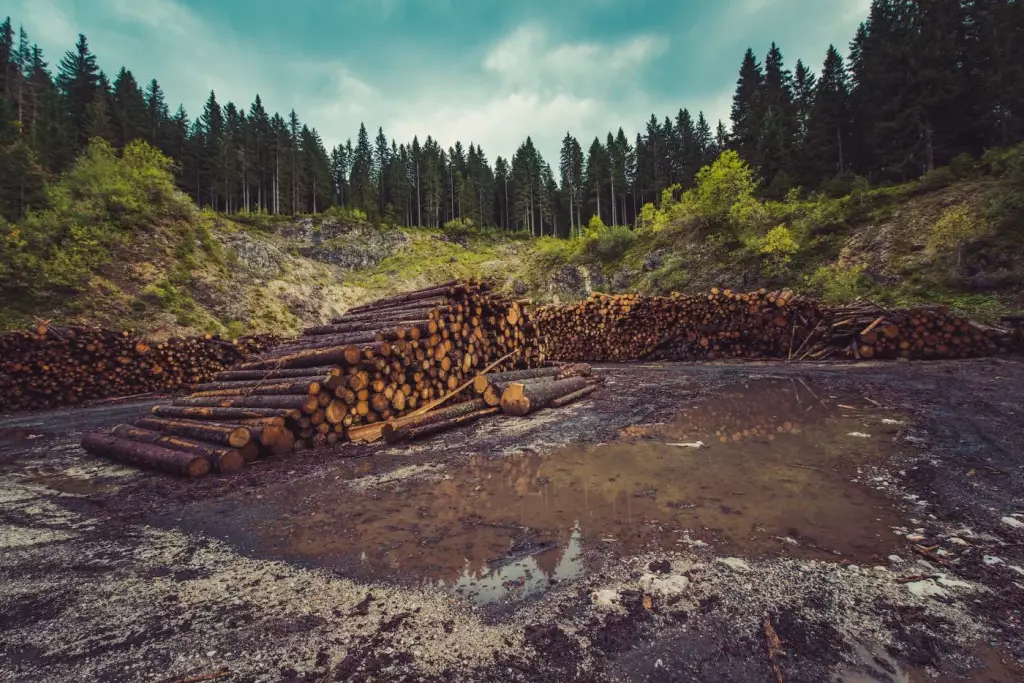
Yellow poplar is relatively abundant and grows quickly, which makes it more affordable compared to other hardwood species that are slower-growing and less abundant. Due to its availability and versatility, it is usually priced between $1 and $3 per board foot.
Tree Prices Across Different States and Regions
The table below illustrates how the prices for different types of trees can vary depending on the region in which they are located:
| Region | Species | Price per Thousand Board Feet |
|---|---|---|
| Pacific Northwest | Douglas Fir | $600 - $800 |
| Pacific Northwest | Western Red Cedar | $1,000 - $1,500 |
| Southeast | Pine | $250 - $400 |
| Southeast | Oak | $800 - $1,200 |
| Northeast | Maple | $500 - $700 |
| Northeast | Cherry | $1,200 - $1,800 |
Douglas fir trees in the Pacific Northwest tend to be more valuable than pine trees in the Southeast due to the abundance of high-quality timber in the region.
Similarly, cherry trees in the Northeast are typically more valuable than maple trees due to the demand for high-quality hardwoods in the region.
Generally speaking, hardwood trees tend to be more valuable than softwood trees, and larger trees are typically more valuable than smaller ones.
Additionally, trees that are located in areas with easy access to transportation and processing facilities may be more valuable than those that are located in remote areas.
When it comes to regional variations in logging prices, there can be significant differences in the prices that logging companies pay for trees depending on the state or region in which the trees are located.
For example, in the Pacific Northwest region of the United States, logging prices tend to be higher than in other parts of the country due to the abundance of high-quality timber and the demand for wood products in the region.

Similarly, in parts of the South where there are large pine plantations, the prices for pine trees may be lower due to the abundance of supply.
Logging prices can fluctuate over time depending on market conditions. For example, during periods of economic growth, the demand for wood products may increase, leading to higher prices for trees.
Conversely, during times of economic downturn or recession, the demand for wood products may decrease, resulting in lower prices for trees.
Timber Products And Their Value
If you plan to sell your timber to a logging company, here are a few types of timber products and their value:
| Timber Product | Use | Value |
|---|---|---|
| Sawtimber | Lumber for construction | $500 to $5,000 per acre |
| Pulpwood | Paper and wood products | $10 to $50 per ton |
| Veneer Logs | Decorative wood products | $500 to $5,000 per thousand board feet |
| Firewood | Heating and cooking | $50 to $150 per cord |
Sawtimber
Sawtimber is the highest-value timber product and is used to produce lumber for construction. The value of sawtimber is determined by the species, size, and quality of the trees.
In general, larger and higher-quality trees will be worth more than smaller or lower-quality trees. On average, sawtimber can be worth anywhere from $500 to $5,000 per acre.
Pulpwood
Pulpwood is used to produce paper and other wood products. It is typically made up of smaller trees or lower-quality trees that are not suitable for sawtimber.
Pulpwood is valued based on its volume, rather than its quality. The value of pulpwood can range from $10 to $50 per ton, depending on the market and location.
Veneer logs
Veneer logs are high-quality logs that are used to produce decorative wood products such as furniture and cabinets. They are typically larger and higher quality than sawtimber, but smaller than the largest trees.
The value of veneer logs is determined by their size, quality, and the market demand for the specific species. Veneer logs can be worth anywhere from $500 to $5,000 per thousand board feet.
Firewood
Firewood is a type of timber product that is primarily used for heating and cooking. It is typically made up of small-diameter trees or branches that are not suitable for sawtimber or pulpwood.
It is often sold in cords, which is a unit of measurement that refers to a stack of wood that is 4 feet high, 4 feet wide, and 8 feet long.
In some areas, firewood can be sold for as little as $50 per cord, while in other areas it can be sold for as much as $150 per cord.
Firewood is a renewable resource, as long as it is harvested sustainably. It is a popular choice for heating and cooking in rural areas, as well as for camping and outdoor activities.
However, always make sure that firewood is obtained legally and responsibly, as illegal harvesting can have negative impacts on forests and wildlife habitats.
Factors Affecting Tree Prices in the Logging Industry
The following are some of the main factors that can impact how much companies can pay for your timber:
The distance between your timberland and the nearest mill
If your timber is located far away from a mill, you may have to pay more to have it transported, which can reduce your profits.
On the other hand, if your timber is located close to a mill, you may be able to negotiate a higher price.
The size and volume of your trees can also impact the price you receive
Larger trees with more volume are generally more valuable than smaller trees. This is because larger trees can be used for a wider range of products, including lumber, pulpwood, and sawlogs.
If you have a lot of large trees on your property, you may be able to negotiate a higher price.
The quality and grade of your timber can also impact the pricing
Timber quality is determined by factors such as the tree species, growth rate, and overall health of the trees. Higher-quality timber is generally more valuable than lower-quality timber.
Timber grades are used to classify timber based on its intended use. Higher-grade timber is generally more valuable than lower-grade timber.
Negotiating with Logging Companies For Fair Prices
The following are some useful tips for negotiating the price of your trees with logging companies:
1. Know the value of your timber
Knowing the value of your timber can determine the price you can get for it. If you don't know the value of your timber, you may end up selling it for a lower price than it's worth.
To determine the value of your timber, you can hire a professional forester who can assess the quality and quantity of your timber.
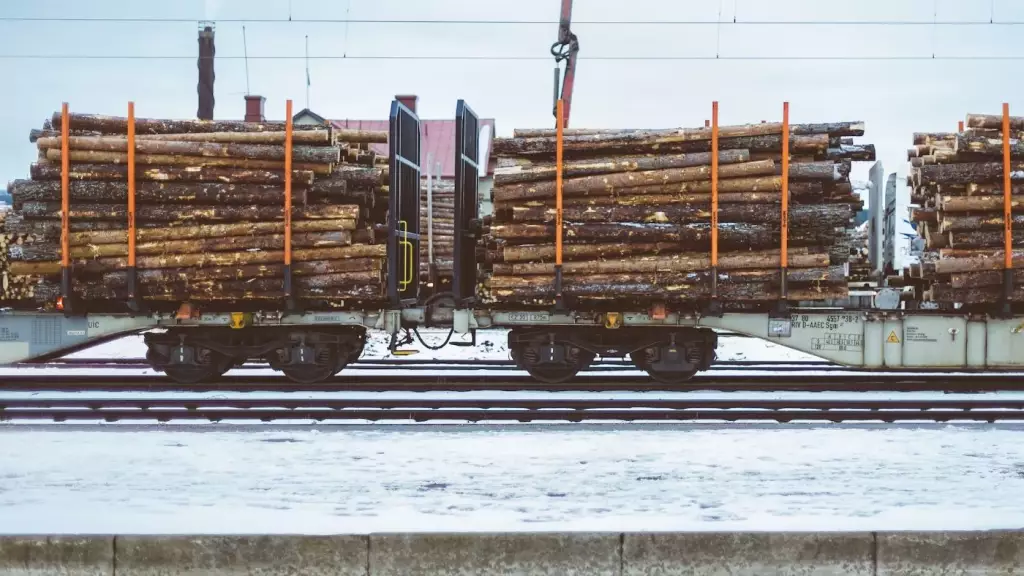
The forester will evaluate factors such as the species of trees, the size of the trees, the density of the forest, and the market demand for the timber. Based on this information, the forester can provide you with an estimate of the value of your timber.
2. Get multiple bids
Getting multiple bids from different logging companies can help you determine the market value of your timber and ensure that you get a fair price for it.
When you get multiple bids, you can compare the offers and evaluate the different terms and conditions of each proposal. This can help you identify any discrepancies in pricing or any additional services that may be offered by one company over another.
If one company offers a higher price than another, you can use this information to negotiate with the other companies to see if they can match or exceed the offer. This can help you maximize the value of your timber and ensure that you get the best deal possible.
3. Understand the logging process
Understanding the logging process can help you ensure that your property is being managed responsibly and sustainably.
By discussing the details of the logging operation with the logging company, you can get a clear understanding of what will be done and how it will be done.
During these discussions, you should ask questions about how the logging company plans to access your property, what equipment will be used, and how the trees will be harvested.
You should also ask about any potential impacts on the environment, such as soil erosion or damage to wildlife habitats.
Choose a logging company that is committed to sustainable forestry practices and will follow all relevant regulations and guidelines. This can help you avoid any legal or environmental issues down the line.
4. Negotiate the terms
After receiving bids from different logging companies, you should review the proposals carefully and identify any areas where you would like to negotiate the terms.
Some of the key areas to consider when negotiating the contract include payment terms, length of the contract, and any additional services that may be offered by the logging company.
You should also be willing to compromise and find a mutually acceptable solution that meets both your needs and the needs of the logging company.
Before signing the contract, make sure you have a clear understanding of all the terms and conditions. If there are any areas that are unclear or that you are not comfortable with, ask for clarification or seek legal advice.
5. Get everything in writing
This means that all the agreements and details of the contract should be documented in a written form. This is important because it provides a clear and concise record of what was agreed upon by both parties.
For example, if you are hiring a contractor to do some work for you, a written contract is important to outline the scope of the work, the timeline for completion, the payment terms, and any other important details.
This way, if there are any issues or disagreements later on, you can refer back to the contract and resolve the issue based on what was agreed upon.
